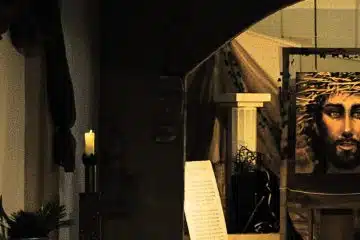The Catholic Moment: Is the rosary really relevant to me?
Thursday, October 8, 2009
By Scott Mussari
Much of the origin of how the rosary came to be cannot be confirmed with certainty. Most historical theologians think the custom of using beads in prayer began sometime during the 1100s. Some believe St. Dominic developed the form of the rosary from a vision he received in 1208. Nearly all credit him and his followers with dramatically spreading its usage from that point onward.
The rosary “ . . . is a prayer loved by countless saints and encouraged by the Magisterium.” This is the complete opening line of Rosarium Virginis Mariae, also known by its English title of The Rosary of the Virgin Mary, an apostolic letter written by the late Pope John Paul II. The document’s publication coincided with the church’s celebration of the Year of the Rosary from October 2002 to 2003. These starting and ending dates were fitting, since every October is traditionally recognized as the month of the rosary. In fact, the feast of Our Lady of the Rosary has been observed on Oct. 7 for more than 400 years.
Despite the rosary having its own day, month and year, the support of the papacy and the validation of saints from the past, a large portion of Catholics do not regularly turn to it for their religious practice. Perhaps this is due to a lack of understanding of why, or how, to pray it.
The rosary begins at the crucifix with a sign of the cross and recitation of the Apostles’ Creed. Movement proceeds to the first bead for the Lord’s Prayer. The next three beads are for three Hail Marys and the subsequent bead for the Glory Be. The first of the five decades begins with a mystery and a Lord’s Prayer. The 10 beads are for 10 Hail Marys, and the following space in the chain is for a Glory Be. The entire decade repeats for a total of five times. The rosary ends with the prayer Hail, Holy Queen.
There are four sets of five mysteries that accompany the prayers, and highlight significant events in the life of Jesus and Mary. The joyful mysteries focus on the deepest cause of Christian happiness with the annunciation to Mary and the birth of Christ. The luminous spotlight the public life of Jesus with His baptism and transfiguration. The sorrowful recall the suffering Jesus endured with the Agony in the Garden and the Crucifixion. The glorious evoke occurrences of divine glory such with the ascension of Jesus and the assumption of Mary.
The repetitive nature of the rosary is intended to push away outside distractions and pull inward contemplation on the mysteries. Thus rather than regarding the repetition as superficial and monotonous, we are challenged to consider it as a superb and autonomous expression of love in reflecting on the experiences Mary and Jesus shared.
Yet many struggle to see the rosary’s connection to daily life and question its relevance to the here and now. What comfort can it bring when waiting scared in a doctor’s office for test results? What help can it give when frustration builds sitting idle in traffic while late for soccer practices and scout meetings? What strength can it provide when uncertainty exists over losing a job and paying bills?
The rosary is relevant because it can bring peace. It provides peace for those who practice it both globally through a reduction in violence and locally through a sense of Christ’s presence within our hearts. Praying to and pondering on Christ through the rosary plants peace in our world and cultivates its growth.
Unless we make the time to actually pray the rosary, we will never know the benefit it could have on our faith lives.
Scott Mussari is the director of faith formation at St. Columban Church in Loveland and can be reached at [email protected].













